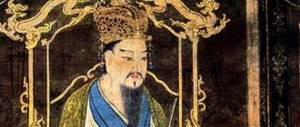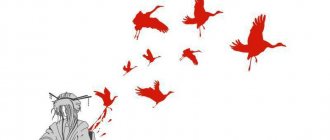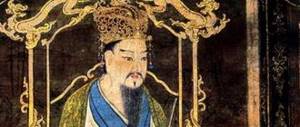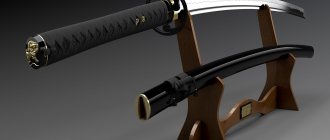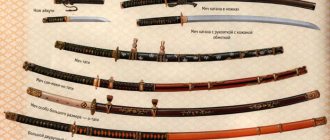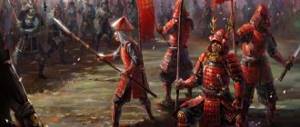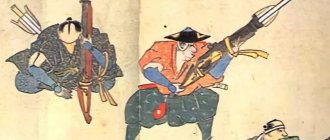Japanese culture is strikingly different from the European ones we are used to. The differences concern important issues such as morality, dignity and death. The differences are especially clear in attitudes towards suicide. Europeans have long considered suicide a sin and an unworthy act, while the Japanese turned it into a ritual, possible and sometimes necessary for an honest person.
The concept of honor among the Japanese aristocracy is based on two important doctrines: to die at any time for your master and to save your face and the good name of your family before others. If the shame of a warrior became known, he was given the opportunity to show his strength of spirit and purity of thoughts through ritual suicide. In ancient Japan, warriors resorted to self-immolation or hanging. It was only in 1156 that the ritual of “ripping open the belly” began to be popularized in Japan. The first to commit seppuku was the daimyo Minamoto no-Tamemoto in order to avoid capture as a result of a brutal clan war.
The difference between harakiri and seppuku
The difference between hara-kiri and seppuku is manifested in their writing and reading. The words themselves consist of two identical hieroglyphs: “rip open” and “belly.” Only the hara-kiri (腹切り) entry puts “belly” first and uses the “kun” Japanese reading, while the seppuku (切腹) entry begins with the word “to cut” and is read with the “onny” Sino-Japanese reading.
It is believed that hara-kiri is found in colloquial speech, while seppuku is more often seen in official documents. In fact, the Japanese themselves use both terms as synonyms for the same ritual action.
Seppuku as the death penalty
The most common form of seppuku was compulsory seppuku, which was used as a form of capital punishment for disgraced samurai, especially those who had committed a serious crime such as unprovoked murder, robbery, corruption, or treason.
Samurai were usually told the full story of their crime and given a certain time to commit seppuku, usually before sunset on a certain day. If the condemned person refused to cooperate, he was forcibly beheaded, retaining only the attributes of seppuku, for example, the short sword laid out in front of the criminal could be replaced by a fan. Unlike voluntary seppuku, seppuku carried out as a capital punishment did not necessarily exempt the offender's family from punishment. Depending on the severity of the crime, half or all of the deceased's property could be confiscated and the family stripped of their rank.
Committing ritual suicide
Among the samurai, it was customary to carry two swords: with a long sword, the “katana,” to fight, and with a short sword, “wakizashi,” to behead victims. It is with a short blade that harakiri is committed, although in the drawings you can see samurai ripping open their stomachs with a long sword. Such images date back to the early period, when the rules for committing seppuku were not spelled out in detail. There is an option to use a blade without a handle. In this case, the blade was wrapped in several layers of paper for convenience.
Traditionally, the place where hara-kiri was performed was covered with a white cloth. The future suicide himself wore a white kimono. This color expresses mourning and sorrow among the Japanese. If seppuku was committed in nature, then a small area of land was covered with sand and leveled. Fencing pegs were installed along the edge.
Two people took part in the ritual action: a samurai who decided to commit hara-kiri, and a kaisaku who beheaded the victim. The latter was chosen from among close friends. Only a person who has sincere feelings for a suicide is able to cut off the head of a dying person with one swing of a long sword and save the dying person from suffering. A special art was to cut the neck so that a thin strip of skin remained in front. In this case, the head of the person who committed seppuku was bowed on his chest, and the flowing blood did not stain the spectators.
Seppuku ritual
The ritual of seppuku has changed significantly over the past centuries. Samurai began to learn harakiri (as well as the use of weapons) from childhood. Experienced mentors in special schools explained to young men how to begin and complete seppuku, while maintaining their own dignity and demonstrating the ability to control themselves until the last moment of life. This training, enormous popularity, dissemination and glorification of hara-kiri in the feudal society of Japan yielded results: children of samurai often resorted to performing the ritual of opening the abdomen.
In feudal times, suicide by opening the abdomen became so widespread that it essentially became a real cult of hara-kiri, almost a mania, and the reason for committing it could be a completely insignificant reason.
Knights and Samurai: Comparison of Feudal Structures in Japan and Europe
On the eve of the ritual, if the convict was allowed to commit seppuku in his own home, the samurai invited close friends to his place, drank sake with them, ate spices and his favorite dishes, joked about the fragility of earthly happiness, thereby emphasizing that the bushi is not afraid of death and hara-kiri for him it is an ordinary occurrence. This is exactly what everyone present was waiting for - complete self-control and dignity before and during the suicide ritual. In most cases, the samurai took a bath and dressed in white clothes symbolizing spiritual purity. When wearing hara-kiri, a samurai from their own clan wears only a kimono and hakama. Hakama (Japanese 袴) - traditional Japanese long wide pleated pants, similar to a skirt - bloomers or cassock, originally worn by men.
Postcard depicting a reconstructed seppuku ritual (the death of Lord Asano, who was later avenged by the 47 Ronin)
On the eve of the hara-kiri ceremony, a list of persons was compiled who, according to the rules, were to be present at the scene of seppuku. These were 1 - 2 main advisers to the daimyo (karo), 2 - 3 minor advisers (yonin), 2 - 3 monogashira - close 4th degree, the head of the palace (rusui, or rusuban), 6 servants of 5 - 6 ranks (if the convicted was entrusted to the supervision of the prince), 4 samurai of the lowest rank, who put in order the place where seppuku was performed and buried the body (if the request of the relatives of the convicted person to give them the remains was rejected). The number of servants depended on the rank of the condemned. In the case of committing harakiri within the clan (i.e. if a samurai was convicted of harakiri not by the shogun's government, but by his own master - the feudal prince), the convicted person was helped by 2 - 3 servants, a Shinto priest and scribes were present.
A ceremoniously dressed samurai, with a sword placed in front of him, prepared for death by writing a dying poem. The ritual took place either on the samurai's estate, in front of the local Shinto shrine (but not on sacred ground), or at the court of the local daimyo. There are rare cases when seppuku took place indoors on special tatami mats with white edges, which were thrown away after the samurai was cremated.
Ogata Korin is a brilliant artist in the Tokugawa era. (1658–1716)
The method of opening the abdomen depended mainly on the samurai himself, on the degree of his self-control, patience and endurance. One of the most important institutions of seppuku was the second participant - Kaishaku (介錯人 kaishakunin). This was a skilled swordsman who cut off a samurai's head, helping to commit seppuku in order to hasten death, and thereby save him from further unnecessary pain or an "ugly death" (with an expression of suffering, falling on his back, screaming, fear on his face, etc.). etc.) and save the name of the suicide from shame. The choice of assistant was made according to the rank of the samurai committing seppuku. Therefore, it was customary for samurai to choose and appoint as kaishaka their best friend, student or relative who could wield a sword perfectly.
The last minutes of the samurai
Committing hara-kiri required special courage from a person. Spectators often watched the ritual action. The suicide would go to the center of the site and sit down with his knees folded and his upper body exposed. Sometimes the kimono was left on the shoulders, and the sleeves were tucked under the knees. Thus, the clothing prevented the dying person's body from leaning back.
Usually a stack of rice paper, a feather and an inkwell with ink were placed in front of the samurai. On the other side they placed a bowl of sake. Traditionally, before seppuku, an alcoholic drink was drunk, parting words were written, and only then a ritual knife was taken into hand. The abdominal incision was made in horizontal and vertical planes, forming a right angle. The most difficult technique was considered jumonji giri, when two movements depicted a cross on the stomach or the Japanese number 10 - “ju”. If the pain allowed, then the samurai with the last movement cut his carotid artery. It was important for the dying man not to show his suffering, and until the last he tried to maintain a straight body position. When the body began to lean forward, the kaisaku completed the ritual with one stroke.
Commemoration of the person who laid hands on himself was carried out immediately after the ritual. The owner escorted the audience to separate chambers and treated them to tea and sweets.
The main directions when cutting open the abdomen
If a stranger samurai assisted in the seppuku ceremony during the journey, they would exchange a few words and inform each other of their status, names and the martial arts school in which they trained. The “assistant” chosen by the convict was obliged to thank him for his trust and high honor. Kaishaku was not supposed to use his own sword during the commission of seppuku, but took it from the convict, if he asked for it, or from his daimyo, since in the event of an unsuccessful blow, the blame for this fell on the owner’s sword.
When performing a suicide ritual, the samurai had to expose his stomach and cut it in a special way.
The samurai would then remove his kimono from his chest, pick up his tanto (knife) or wakizashi (脇差, short sword) which he held by the blade with a piece of cloth wrapped around the blade (to avoid cutting his hand and losing his grip) and stuck it into his stomach, making a cut from left to right. Then the kaishakunin performed kaishaku - a blow with which the warrior was beheaded. The sword strike had to be done in the manner of a dakikubi (抱き首, lit. "embraced head"). It leaves behind a small strip of flesh that attaches the head to the body, so that it hangs on the chest between the arms, as if being hugged. After performing the ritual, the kaishaku wiped the blade with white paper, the severed head was lifted by the hair and shown to witnesses, after which the body was covered with a white cloth.
Harakiri was performed in different ways and means, which depended on the methodology developed by various schools. The samurai, plunging the weapon into the abdominal cavity, had to cut it so that those around him could see the insides of the one doing seppuku and thereby the “purity of thoughts” of the warrior.
By the middle of the Tokugawa period, it became common for a kaishakunin to behead a man the moment he began stabbing him in the stomach to spare him prolonged and unnecessary pain. Sometimes a white fan was used as a "symbol" instead of a sword for seppuku. The moment the samurai raised his fan , the second one instantly decapitated the man with a masterful blow.
Tanto (短刀)
A specialized form of seppuku in feudal times was known as kanshi (諫死, "deadly objection" or "deadly protest"), in which a servant commits suicide in protest of the lord's decision. The servant made one deep horizontal cut in his stomach and then quickly bandaged the wound. After this, the man had to appear before his master, make a speech in which he protested against his master's actions, and then revealed his mortal wound. This should not be confused with funshi (憤死, death by indignation), which means any suicide committed to express outrage, dissatisfaction, or protest. Some samurai chose to perform a significantly more difficult form of seppuku known as jumonji giri (十文字切り, "cross cut"), which does not involve a kaishakunin that could quickly end a samurai's suffering. This is a second, more painful vertical incision in the abdomen. A samurai performing jumonji giri had to calmly endure his suffering until he dies from loss of blood, covering his face with his hands.
Jigai and the women of the samurai class
In Japan, the wife and daughters of a samurai were required to learn weapons skills. Since only a man can be a samurai, a woman warrior was called onna-bugeisha. Unlike the buke-no-onna (a woman from the bushi class), who looked after children and could protect her home if necessary, a female warrior could participate in clan wars on equal rights. Absolute loyalty to the boss was instilled in them.
Upon reaching adulthood (12 years old), the onna-bugeisha received a short kaiken dagger. She wore it in the folds of her clothes or her sleeve. It was also used by a female warrior to commit ritual suicide. In general terms, jigai and hara-kiri are similar. Only the incision was made not along the abdomen, but through the larynx. Before the ritual itself, the ladies tied their ankles so that after death they would not appear before the audience in an uncomfortable position.
Women's suicide ritual
Woodcut depicting Onodera's wife Junai, one of the Forty-seven Ronin.
She prepares to follow her husband to death. Women had their own suicide ritual. Some women belonging to samurai families committed suicide by cutting the jugular vein with a knife such as a tanto (“short sword,” see image above) or kaiken (“short dagger”). The main goal was to achieve quick and certain death in order to avoid capture. Before committing suicide, a woman would often tie her knees together so that her body would be found in a dignified position despite the spasms of death. Jigai, however, does not refer exclusively to this particular method of suicide. Jigai were often done to preserve honor if military defeat was imminent, to prevent rape. Invading armies would often enter houses and find the lady of the house sitting alone, facing away from the door. As they approached her, they saw that she had ended her life long before they reached her.
Famous Japanese who committed harakiri
In 1868, seppuku was banned. The last case is considered to be harakiri committed by the general of the Japanese Empire Nogi Maresuke after the death of Emperor Meiji. He not only ripped open his stomach in a cross shape, but also cut his larynx. Following him, his wife performed jigai.
47 Ronin
The story of the 47 ronin is a 17th-century legend known to every Japanese, which became the basis for many other works. It says that Mr. Asano-Takumi-no-Kami was provoked into conflict at court and sentenced to seppuk. To defend the honor of the deceased, 47 of his faithful samurai became ronin (masterless warriors), dealt with the courtier responsible for the death of their master, and then committed hara-kiri. Now their remains rest in the Sengaku-ji Monastery and are an object of worship.
Yukio Mishima (born Kimitake Hiraoka)
The post-war Japanese writer was nominated three times for the Nobel Prize in Literature. His novel The Golden Temple is considered the most widely read Japanese work in the world. Yukio committed suicide on November 25, 1970, following a failed coup attempt at a military base in Ichigaya. His friend Masakatsu Morita was unable to decapitate the body after several attempts, so he handed the sword over to another member of the Shield Society, and only then was the writer freed from torment.
Cancellation of seppuku
In 1873, judicial seppuku was officially abolished by the Meiji administration, but cases of voluntary seppuku continued to occur. Despite the cancellation, many Japanese feared after the surrender of the Imperial Japanese Army on August 15, 1945 that Emperor Hirohito might ask the military to commit seppuku due to their defeat, but this order was never given. However, high-ranking officers and members of the general staff, such as Minister of War Anami Korechika (阿南惟幾), committed voluntary seppuku on the day of surrender.
The most recent known cases of voluntary seppuku involve the famous Japanese writer Mishima Yukio (三島由紀夫, 1925-1970), who committed suicide at the headquarters of the Japan Self-Defense Forces, and the judoka Inokuma Isao (猪熊功, 1938-2001).
Views: 9,491
Share link:
- Tweet
- Share posts on Tumblr
- Telegram
- More
- by email
- Seal
Harakiri as an aesthetic ritual
Since 1600, a ritual has been created around seppuku. Traditional suicide became an honorable death penalty and was structured and systematized. Among other things, an assistant was introduced who was supposed to deliver the final blow.
The samurai who was to commit seppuku was dressed in a white kimono. He received his last meal and a double serving of sake. He often wrote so-called dying poems. After this, the samurai exposed his stomach and folded a piece of cloth around the middle of the blade of his tanto knife. Then he plunged the knife into the stomach and cut from left to right.
We also recommend reading: A little history of St. Petersburg
After that, he bent his neck, and the second delivered an accurate blow to the neck with a katana. The art was to try to leave a small piece of skin. So that the head does not fall off completely, but falls into the hands of the dead man. Thus, plunging a knife into the stomach became more of a symbolic act.
Seppuku became an aesthetic ritual with a lengthy ceremony. Here is the dead man in the center, dressed in a white kimono, with a tanto knife on the table in front of him and a second one in black behind him.
What is harakiri and why was it committed?
Harakiri, in other words seppuku, is a ritual suicide by ripping open the abdomen, committed by a samurai according to the ancient Japanese code of honor Bushido. It was a complex ritual during which samurai demonstrated the courage to look death in the eye and the courage to ignore pain, as well as purity of thoughts before the gods and people. Samurai committed seppuku in order to atone for guilt, wash away shame and to save the lives of their family and vassals. This was also a type of execution: the person sentenced to death was obliged to take his own life, which was considered more honorable than hanging or beheading by the hands of the executioner. Seppuku was also committed after the death of the master as a sign of boundless loyalty and devotion to him (the so-called junshi), in order to continue to serve him in another world.
Painting by Tatyana Basova “Samurai. Scull"
